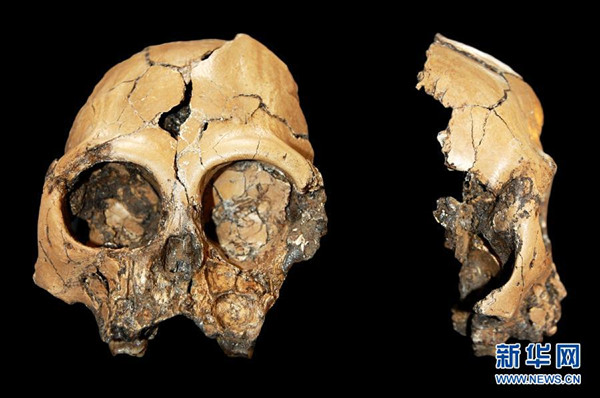A six-million-year-old fossilized cranium of a juvenile ape has been unearthed in southwest China’s Yunnan Province, a rare find paleontologists hope may help unravel the mystery of human origins.
 |
|
A six-million-year-old fossilized cranium of a juvenile ape has been unearthed in southwest China’s Yunnan Province. [Photo/Xinhua] |
The remains is only the second recovered cranium belonging to a juvenile ape inhabiting Eurasia in the Miocene that dates back to 23 to 5 million years ago, Ji Xueping, a researcher who led the study, told a news conference on Thursday.
“The skull boasts great significance in research on our ancestors, as the time when the primate lived was close to that of the first humans, estimated at between 7 million to 5 million years ago,” said Ji, with Yunnan Institute of Cultural Relics and Archaeology.
“Africa has found a number of fossils of ancient primates of that age, but such finds are scarce in Asia. From this perspective, the discovery is quite important,” said Lu Qingwu, a professor with Institute of Vertebrate Paleontology and Paleoanthropology, Chinese Academy of Sciences.
A detailed description of the find was published in the Chinese Sciences Bulletin last month, nearly four years after Ji and his fellows found it in a pit owned by a brick factory in Shuitangba community, Zhaotong City.
The age of the fossil ape, a member of the genus Lufengpithecus, was identified as between 6.2 to 6.1 million years ago in the late Miocene, the youngest among all ancient primates previously detected in Yunnan.
The well-preserved cranium that has maintained most of the facial skeleton is relatively complete and largely undistorted, providing valuable information about the morphology and growth of Lufengpithecus, according to the study.
![]()